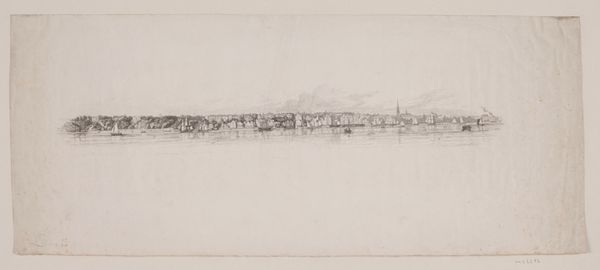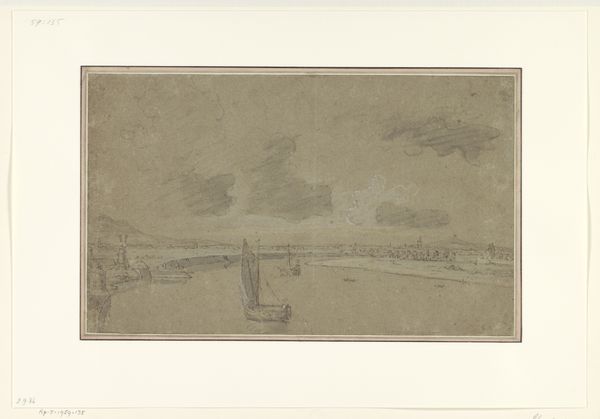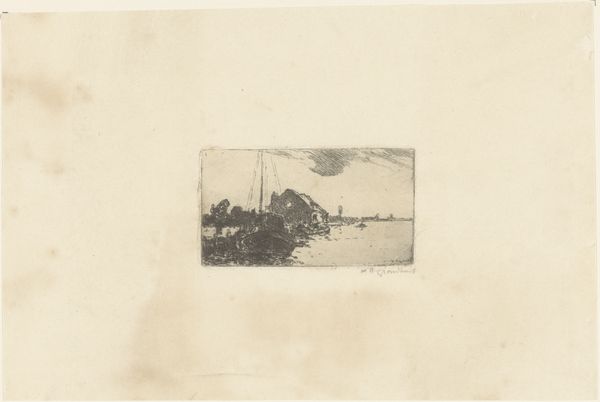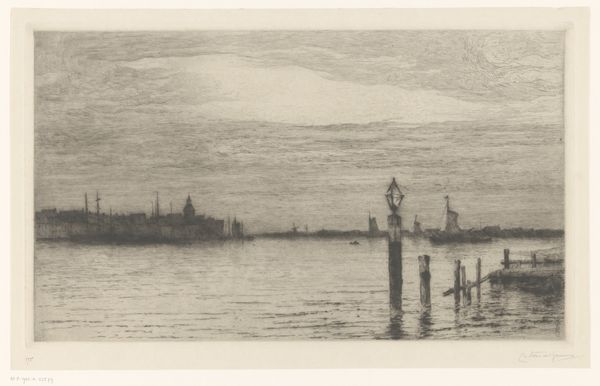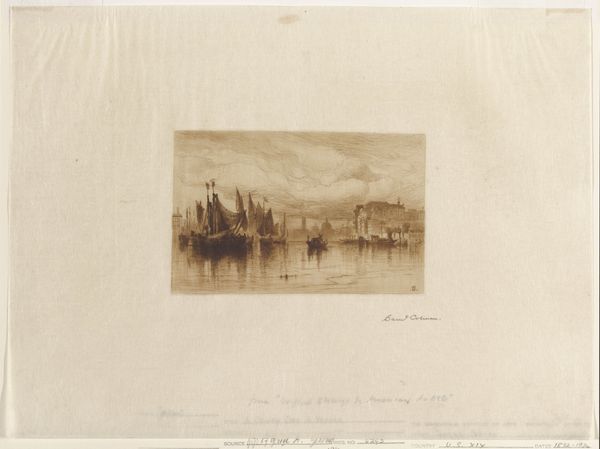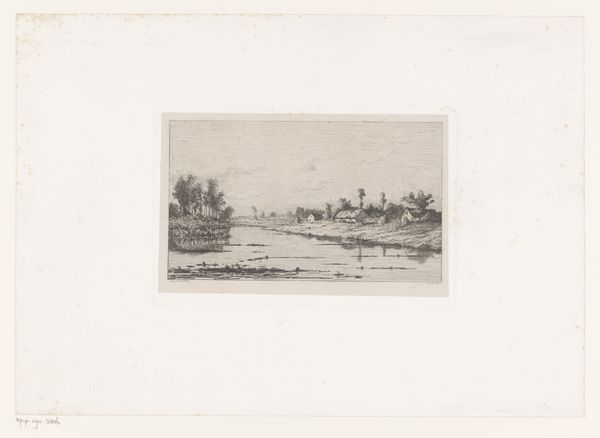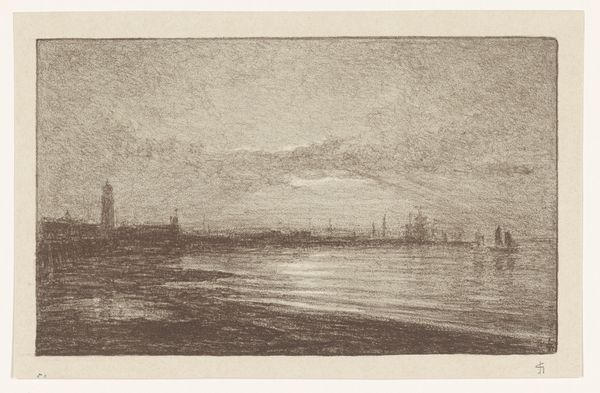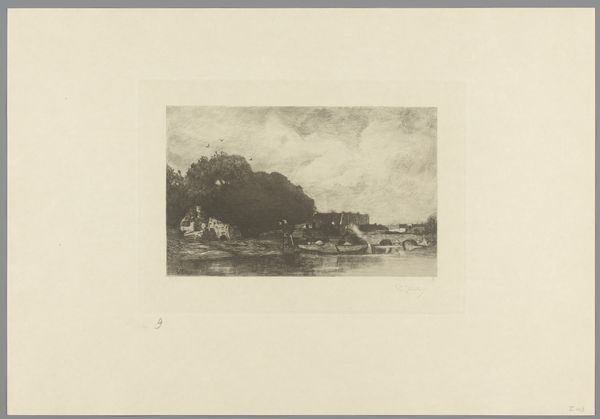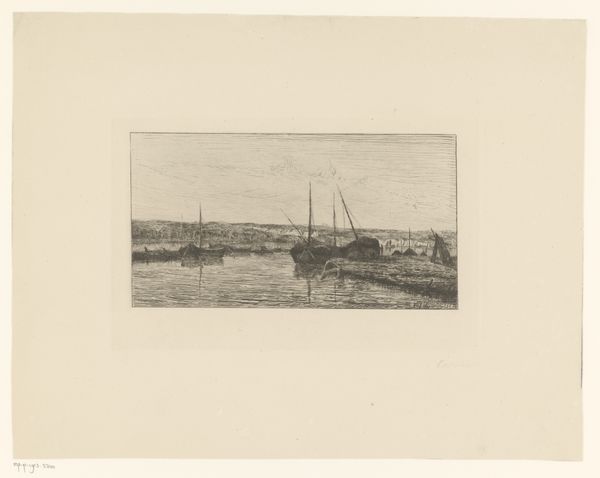
print, etching
# print
#
etching
#
landscape
#
river
Dimensions: height 126 mm, width 252 mm
Copyright: Rijks Museum: Open Domain
Curator: Jules Guiette created this etching titled "Gezicht op een dorp aan een rivier in de avond," or "View of a village on a river in the evening," sometime between 1862 and 1901. Editor: It has such a still, quiet quality. Almost mournful, with those muted tones and soft light reflecting on the water. The level of detail is remarkable given the nature of etching, it’s nearly photorealistic. Curator: And that quality speaks directly to the burgeoning market for such landscapes among the rising bourgeois class. Etchings such as this were affordable, reproducible, and perfectly sized for domestic display, fueling a broader consumption of art. How were these images circulating and being consumed within domestic settings? These questions really strike me. Editor: I agree. There's also the implied labor—consider the artist's process, the physical act of etching, the acid, the press. It gives me an appreciation for the tangible craft that goes into printmaking, resisting the high/low art distinction of the time. Curator: Yes, and I see the work responding to specific exhibition and collecting trends, fitting a gap in the late 19th-century art market. Editor: Looking closely at the small illuminated windows depicted in the artwork, one almost imagines the inhabitants are aware they may be under observation. The lights seem less functional, more aesthetic or theatrical than they might appear. Curator: And note the depiction of the industrial in the context of the agrarian: these towns are hardly disconnected from manufacturing or commerce. This challenges the idea of landscape purely as an untouched, pristine place. Editor: Exactly. Perhaps an intentional commentary, perhaps mere reflection of an era… But even at that scale, Guiette manages to capture a specific moment in time. The sky and water communicate an idea that goes far beyond a mere depiction of objects. Curator: I’m so glad you noted that element. These etchings speak to broader shifts in what kind of art was being produced, for whom, and with what level of technical and intellectual engagement from both maker and consumer. Editor: Agreed! There’s far more here than just pretty scenery to consume.
Comments
No comments
Be the first to comment and join the conversation on the ultimate creative platform.

